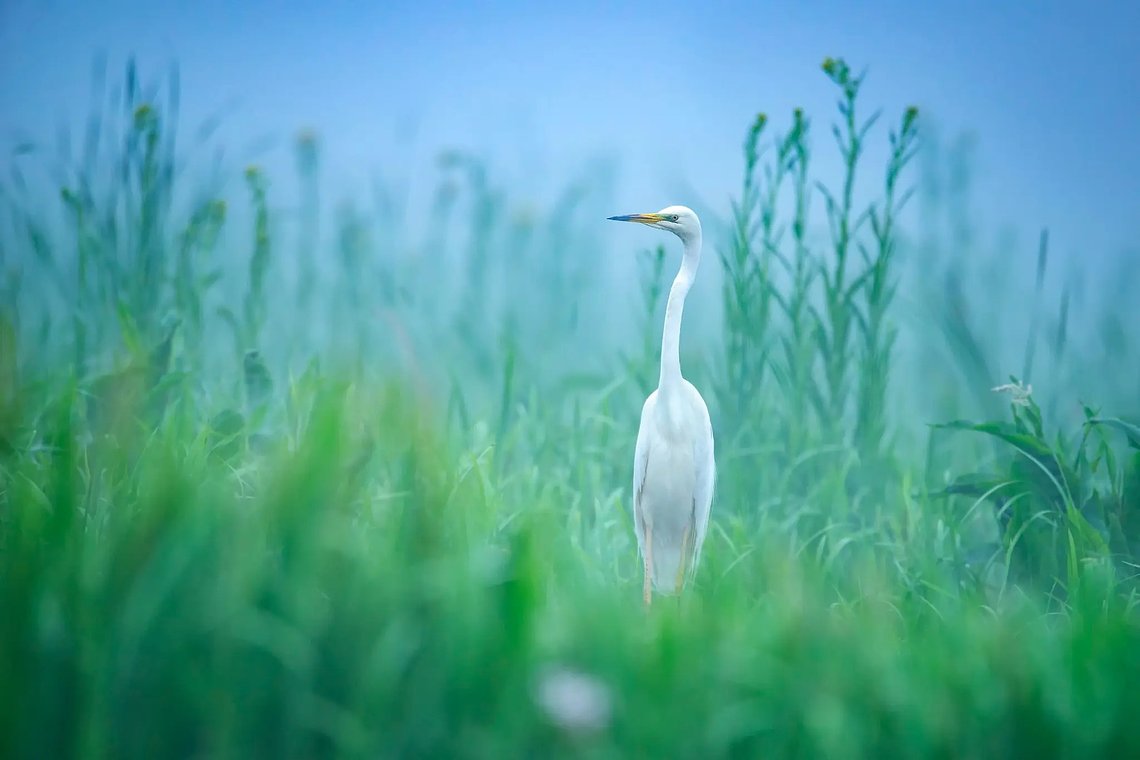Wildlife of Romania

Posted on Tue 14 Sep 2021 · by Oana Moldovan
Stepping into Romania might feel like going into the land of myth and legend. And if you’re thinking that, you’re not far from the truth; the cultural heritage is one steeped in tradition. That is, however, a story for another time. What you will also find here are miles upon miles of rolling hills, roads losing themselves into valleys, bending the way the rivers go, and tall mountains covered in the greenest forests. Everywhere you look, there is another peak, another meadow or valley to take your breath away.
All this natural beauty is home to over 700 species of animals, most of them birds (382 species), fish (184 species), and mammals (110 species). A wild haven for fauna, Romania is also a wildlife lover’s paradise. Here is what any nature and animal enthusiast must not miss while in Romania.
The Carpathian Mountains
The Carpathian mountain range covers a third of Romania’s territory, housing what is known as Europe’s last virgin forests. Wild and full to the brim with centuries-old trees, these forests shelter most of Romania’s big mammals.

Brown Bear (left) and Grey Wolf (right)
The Brown Bear
The Carpathian forests are boasting of brown bears. A little over 6,000 have found their permanent residence here, marking it as the largest population of brown bears in Europe. While agriculture and farming have restricted their territory, the brown bears still claim most of Romania’s woods. A large mammal, the Eurasian brown bear can weigh up to 350 kilograms and can roam the forests for approximately 25-30 years.
While not a desired encounter on a leisurely hike in the woods (make sure you make plenty of noise if you’re out and about!), wild bears can be spotted in a controlled manner, such as the bear hides. These little treehouses allow you to survey the area at dusk, waiting patiently for bears to come to you.
If you want to spot the Brown Bear, check out our 4-night Brown Bear Experience in Romania.
The Grey Wolf
With over 3,000 wolves in the wild, Romania hosts about 10% of Europe’s population. Travelling in packs, the grey wolves ramble the Transylvanian forests. With their prey consisting mostly of ungulates (deer, roe deer, chamois), it is the main competitor for human hunters. This made the wolf wary of human presence, meaning a wolf sighting is a rare occurrence.
Because wolf encounters are low, if you want to catch a glimpse, a specialized tracking trip is the way to go. Check out our Grey Wolf Experience which includes a 2-nights and 3-days expedition deep into the Transylvanian woods.

The European Bison (left) and Eurasian Lynx (right)
The European Bison
At around a ton, the bison is Europe’s heavyweight champion. Having been hunted to extinction across Europe, this gentle giant is slowly making a comeback. The bison has been reintroduced in captivity after the 2000s, with rewilding projects after 2010. The most ambitious one, a WWF Romania and Rewilding Europe effort, is in Tarcu Mountains in south-west Romania.
Other reserves are in Poiana Rusca Mountains in the western Romania, the Bison Valley Nature Rerserve near Brasov, or Vanatori-Neamt Nature Park in north-eastern Romania.
The Lynx
The last of Romania’s “big three”, alongside brown bears and wolves, the lynx discreetly roams the Carpathian forests. With a population estimated at 2,000 individuals, the real numbers are unknown, due to the elusive nature of the cat and hunting. Mainly active during the night, and avoiding humans, it’s nearly impossible to spot the Eurasian Lynx. Those going in search of it might be lucky to encounter its smaller counterpart, the wild cat.
As opposed to the Iberian Lynx which you can spot in Andalusia, the Eurasian Lynx is the largest feline in Europe.
Besides the big mammals, the Transylvanian forests also hide foxes, boars, deer, and small animals like rodents or reptiles. While in the mountains, keep your eyes peeled for the chamois escalating the peaks.
Sadly, between illegal logging and poaching, the future of the wildlife residing here is uncertain.

Chamois (left) and a wild boar (right)
The Danube Delta
And once you’ve head enough of the strong, alpine air, turn your back to the mountains and head east. Here, the landscape is plane, but not at all plain. The Danube Delta is as rich in dreamy sceneries as it is in birdlife. The third biggest biodiversity in the world after the Great Barrier Reef and the Galapagos Islands, the Danube Delta is home to over 5,000 species. Out of these, over 300 species of birds, 3,500 animal species, and 1,700 plants. Most notably, the largest numbers of white and Dalmatian pelicans in Europe reside here, alongside 60% of the world’s pygmy cormorants.
On the wild beaches of Sfantu Gheorghe or secluded forest of Letea, you may also witness wild horses running free.
Explore the richness of the Danube Delta on the 7-night Danube Delta Experience.

A Dalmatian Pelican (left) and wild horses (right)
Greenery, sceneries to die for and a plentiful fauna – this is Romania in a nutshell. Which of these animals are you hoping to see on your next outdoor adventure?
Written by Oana Moldovan, Untravelled Paths
Visit our Romania Tours page
or
Read more from our blog here
